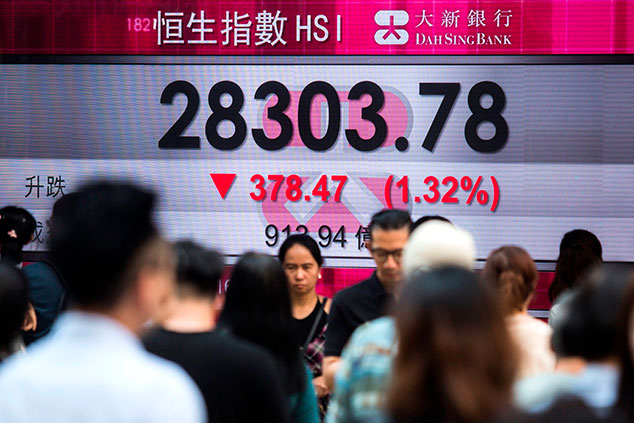
To answer these questions, we talked to Dr Robert Horrocks, chief investment officer of Matthews Asia, who has covered the region for over a quarter of a century.
Don’t worry about a trade war
“The perception is that there are two big negatives for Asian markets at the moment”, says Horrocks. The biggest is the possibility of a trade war between the US and China. But despite Donald Trump’s belligerent rhetoric, Horrocks is more sanguine than most. There is “likely to be some limited tit for tat”, he says, but “the chances of a long term trade war are very low”.
It’s also important to put this into historical perspective, as “every American administration has had some sort of row with China” but they have “ultimately managed to work things out because a full-scale trade war would not be in anyone’s interest”.
Of course, you might argue that trusting Trump to act rationally may be going a little too far. But if you look beyond the presidential Twitter account, you will find that “there is little institutional backing for a full-scale trade war”, with many in Trump’s own administration strongly opposed to any escalation.
Similarly, Congress will want to have its say, and is likely to act as a brake on any protectionist impulses. And the economies of both US and China are now so entwined “that tariffs would have to be raised to huge levels to significantly reverse this”.
But tighter monetary policy could have an effect
However, if Horrocks is largely dismissive of the threat from a trade war, he agrees that investors are behaving more rationally when they are concerned by the second factor weighing down on markets, namely monetary tightening.
With the Federal Reserve raising interest rates, China tightening its monetary policy and now Japan toning down its programme of money printing, countries with large current-account deficits are likely to suffer. Still, even in this case, the effects will be short lived, so investors shouldn’t be too worried, especially since “Asian companies are still making decent profits”. It could even end up being a positive for investors if it creates opportunities by depressing valuations.
One country that Horrocks particularly likes is Vietnam. It has a “young, disciplined and well-educated population” as well as “several deep-sea ports that will ensure ready access to the rest of the world”. Although still nominally a communist country, its government is moving in the right direction and “following the Chinese blueprint for economic reforms”. It is “ahead of the curve when it comes to opening up its financial and banking sectors”, and there are plenty of Vietnamese companies “that will benefit from growth”, though these are not directly available to ordinary investors in the West.
Horrocks is moderately bullish about China, since the “weak” marker performance has “created an opportunity to add some companies to your portfolio”. And if prices continue to decline “there might be a lot more bargains in the future”.
But he is more sceptical about India: “future Indian prosperity depends on the success of Modi’s reforms”, especially changes to land rights and the banking system that will “lay the building blocks for much-need infrastructure projects”. Plus, share prices “are a little on the expensive side”.
Japan is “interesting”, too, says Horrocks. It may be near the end of the economic and business cycle, with recent changes in monetary policy providing additional headwinds, but it is set for solid growth in the medium to long-term. Despite the surge in prices over the past few years, he believes that there is still value to found in the small-cap sector.